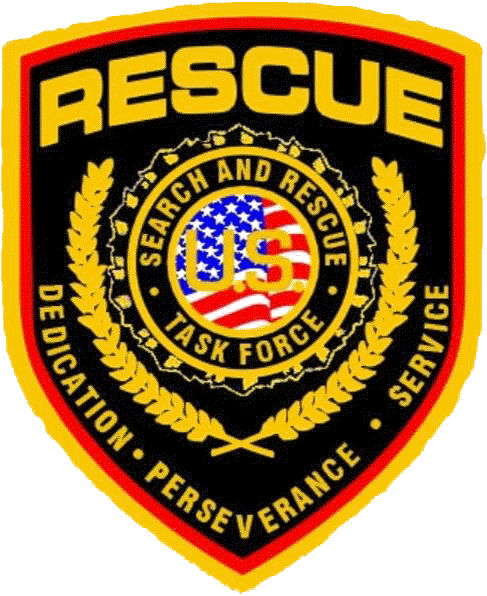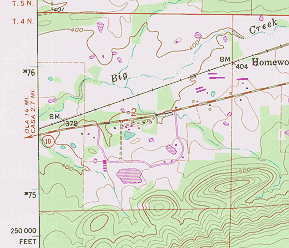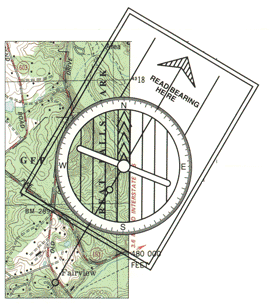Link to using a compass
Excerpt from excellent article: (Add link to your favorites and please read the article)

Compass Basics

Quick Map Basics Review For Compass Use
 Part of a 7.5-minute topographic map at 1:24,000 scale Part of a 7.5-minute topographic map at 1:24,000 scale |
Distances and directions take a bit of figuring, but the topography and features of the land are easy to determine. The topography is shown by contours. These are imaginary lines that follow the ground surface at a constant elevation; they are usually printed in brown, in two thicknesses. The heavier lines are called index contours, and they are usually marked with numbers that give the height in feet or meters. The contour interval, a set difference in elevation between the brown lines, varies from map to map; its value is given in the margin of each map. Contour lines that are close together represent steep slopes.
Natural and manmade features are represented by colored areas and by a set of standard symbols on all U.S. Geological Survey (USGS) topographic maps. Woodlands, for instance, are shown in a green tint; waterways, in blue. Buildings may be shown on the map as black squares or outlines. Recent changes in an area may be shown by a purple overprint. A road may be printed in red or black solid or dashed lines, depending on its size and surface. A list of symbols is available from the Earth Science Information Center (ESIC).
From Here to There - Determining Direction With Compass
The compass consists of a magnetized metal needle that floats on a pivot point. The needle orients to the magnetic field lines of the earth. The basic orienteering compass is composed of the following parts: - Base plate
- Straight edge and ruler
- Direction of travel arrow
- Compass housing with 360 degree markings
- North label
- Index line
- Orienting arrow
- Magnetic needle (north end is red)

One thing to remember is that a compass does not really point to true north, except by coincidence in some areas. The compass needle is attracted by magnetic force, which varies in different parts of the world and is constantly changing. When you read north on a compass, you're really reading the direction of the magnetic north pole. A diagram in the map margin will show the difference (declination) at the center of the map between compass north (magnetic north indicated by the MN symbol) and true north (polar north indicated by the "star" symbol). This diagram also provides the declination between true north and the orientation of the Universal Transverse Mercator (UTM) grid north (indicated by the GN symbol). The declination diagram is only representational, and true values of the angles of declination should be taken from the numbers provided rather than from the directional lines. Because the magnetic declination is computed at the time the map is made, and because the position of magnetic north is constantly changing, the declination factor provided on any given map may not be current. Contact the National Geophysical Data Center (NGDC) to obtain current and historical magnetic declination information for any place in the United States.
Taking a compass bearing from a map:
- Draw a straight line on the map passing through your location and your destination and extending across any one of the map borders.
- To use this bearing, you must compensate for magnetic declination. If the MN arrow on the map magnetic declination diagram is to the right of the true north line, subtract the MN value. If the arrow is to the left of the line, add the value.
 (1) Drawing a straight line over the map edge (1) Drawing a straight line over the map edge |  (2) Reading the compass on the map (2) Reading the compass on the map |
 (3) Using the magnetic declination diagrams (3) Using the magnetic declination diagrams |  |

No comments:
Post a Comment